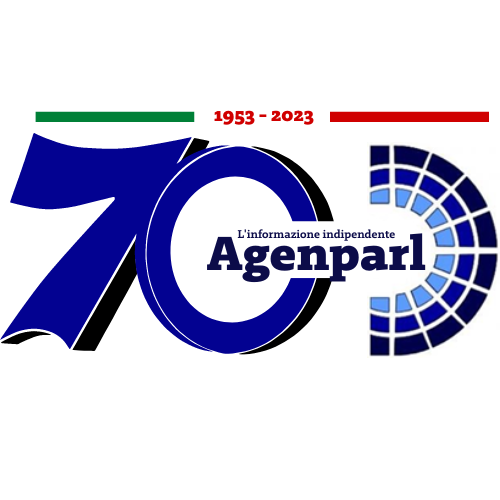 (AGENPARL) - Roma, 19 Settembre 2025
(AGENPARL) - Roma, 19 Settembre 2025(AGENPARL) – Fri 19 September 2025 *TSUNAMI | Installate le prime boe in grado di monitorare i maremoti nel
Mediterraneo*
*Si è conclusa con successo l’iniziativa dell’INGV che segna un passo
fondamentale nella mitigazione del rischio maremoto nel Mare Nostrum*
*[Roma, 19 settembre 2025]*
Si è conclusa con successo *la campagna di deposizione delle prime boe di
mare profondo nello Ionio da parte dell’Istituto Nazionale di Geofisica e
Vulcanologia (INGV)*. Obiettivo dell’iniziativa è quello di monitorare gli
tsunami nel Mar Mediterraneo per consentire la mitigazione del rischio
maremoto.
Il *Mare Nostrum*, infatti, è stato spesso teatro di fenomeni importanti,
principalmente di origine sismica o dovuti all’attività vulcanica, come nel
caso di Santorini e Stromboli. Grazie alla deposizione delle boe e ai dati
rilevati in tempo reale, in caso di forti terremoti tsunamigenici nelle
isole ioniche o nell’arco ellenico *si potrà valutare in modo più accurato
il possibile impatto di uno tsunami sulle coste italiane.*
La campagna di deposizione delle boe in mare si è svolta tra il 9 e il 17
settembre ed è stata realizzata grazie al Progetto MEET (*Monitoring
Earth’s Evolution and Tectonics*), coordinato dall’INGV e finanziato dal
PNRR, con la fondamentale partecipazione dell’*expertise* di ricercatori e
tecnici dell’Istituto, da molti anni impegnati nello studio degli tsunami e
nelle tecniche di monitoraggio marino.
La nave Christos LVII è salpata dal porto di Segunto, in Spagna, con a
bordo tre tecnologi dell’INGV, Antonio Costanza, Andrea Di Benedetto e
Francesco Macaluso, l’equipaggio dell’imbarcazione e della MSM
(Mediterráneo Señales Marítimas), società spagnola costruttrice di boe.
La deposizione si è svolta in due fasi. *La prima, avvenuta il 14
settembre, ha visto l’installazione di due sensori di pressione assoluta a
una profondità di circa 3200 metri in un punto ubicato circa 100 km a est
della costa della Sicilia orientale*. Contestualmente, nella stessa area, è
stata installata una boa fissata a un sistema di ancoraggio, in grado di
ricevere i dati tramite un modem acustico e di trasmetterli via satellite
al Centro Allerta Tsunami dell’INGV.
I sensori di pressione sono in grado di rilevare variazioni dell’altezza
della colonna d’acqua soprastante di qualche centimetro, riuscendo a
distinguere tra le onde provocate dal vento, le maree o i possibili tsunami.
*Durante l’ultima fase, lo scorso 16 settembre, una seconda boa con le
stesse caratteristiche tecniche è stata deposta più a nord, a circa 100 km
dalla costa calabra ionica, a una profondità di 2600 metri.*
In caso di tsunami, i sensori di pressione trasmettono i dati con una
frequenza maggiore, al fine di permettere una misurazione fedele delle
onde, di aiutare il sistema di previsione e analisi in tempo reale
dell’INGV e di consentire una maggiore tempestività nella conferma
dell’effettivo arrivo di uno tsunami sulle coste.
*Link utili:*
Istituto Nazionale di Geofisica e Vulcanologia (INGV)
MEET – Monitoring Earth’s Evolution and Tectonics
Mediterráneo Señales Marítimas
*— *
*TSUNAMI | The first buoys for monitoring tsunamis in the Mediterranean
have been installed by INGV*
*The INGV initiative has been successfully completed, marking a fundamental
step forward in mitigating the risk of tsunamis in the Mediterranean Sea*
*[Rome, 19 September 2025]*
The campaign to deploy the first deep-sea buoys in the Ionian Sea *by the
National Institute of Geophysics and Volcanology (INGV)* has been
successfully completed. The aim of the initiative is to monitor tsunamis in
the Mediterranean Sea in order to mitigate the tsunami risk.
The Mare Nostrum has often experienced significant phenomena, mainly due to
seismic or volcanic activity, as in the case of Santorini and Stromboli.
Thanks to the deployment of the buoys and the real-time data collected, in
the event of strong tsunamigenic earthquakes in the Ionian Islands or the
Hellenic arc, it will be possible to more accurately assess the possible
impact of a tsunami on the Italian coast.
The campaign to deploy the sea buoys took place between September 9 and 17
and was carried out *thanks to the MEET (Monitoring Earth’s Evolution and
Tectonics) Project, coordinated by the INGV and funded by the PNRR, with
the fundamental participation of the expertise of researchers and
technicians from the Institute*, who have been involved in the study of
tsunamis and marine monitoring techniques for many years.
The Christos LVII ship sailed from the port of Segunto, Spain, with three
INGV technicians on board, Antonio Costanza, Andrea Di Benedetto, and
Francesco Macaluso, the crew of the boat, and MSM (Mediterráneo Señales
Marítimas), a Spanish buoy manufacturing company.
The deployment took place in two phases. *The first, on September 14,
consisted of the installation of two absolute pressure sensors at a depth
of approximately 3,200 meters at a point located about 100 km east of the
eastern coast of Sicily.* At the same time, a buoy attached to an anchoring
system was installed in the same area, capable of receiving data via an
acoustic modem and transmitting it via satellite to the INGV Tsunami Alert
Centre.
The pressure sensors are capable of detecting variations in the height of
the water column above them of a few centimeters, distinguishing between
waves caused by wind, tides, or possible tsunamis.
*During the last phase, on September 16, a second buoy with the same
technical characteristics was placed further north, about 100 km from the
Ionian coast of Calabria, at a depth of 2600 meters. *In the event of a
tsunami, the pressure sensors transmit data at a higher frequency in order
to provide accurate wave measurements, helping the INGV’s real-time
forecasting and analysis system and allowing for more timely confirmation
of the actual arrival of a tsunami on the coast.
*Useful links:*
Istituto Nazionale di Geofisica e Vulcanologia (INGV)
MEET – Monitoring Earth’s Evolution and Tectonics
Mediterráneo Señales Marítimas
[image: image.jpeg]
*Fig.1 –* Un momento delle operazioni di deposizione in mare delle boe. / A
moment during the operation to deploy the buoys in the sea.
[image: image.jpeg]
*Fig.2 –* Un momento delle operazioni di deposizione in mare delle boe. / A
moment during the operation to deploy the buoys in the sea.
________________________________________________________
*Ufficio Stampa / Press Office*
*Istituto Nazionale di Geofisica e Vulcanologia – INGV *
*www.ingv.it | * *Facebook* *INGV Istituto
Nazionale di Geofisica e Vulcanologia
** |**Instagram ingv_press
*
*|X* *Istituto Nazionale di Geofisica e Vulcanologia*
*|**LinkedIN Istituto Nazionale di
Geofisica e Vulcanologia *
*|**Youtube* *INGV – Ist. Nazionale di Geofisica e Vulcanologia
**|Telegram **INGV press*
. *|Threads **INGV press*
| *WhatsApp* INGV Press
